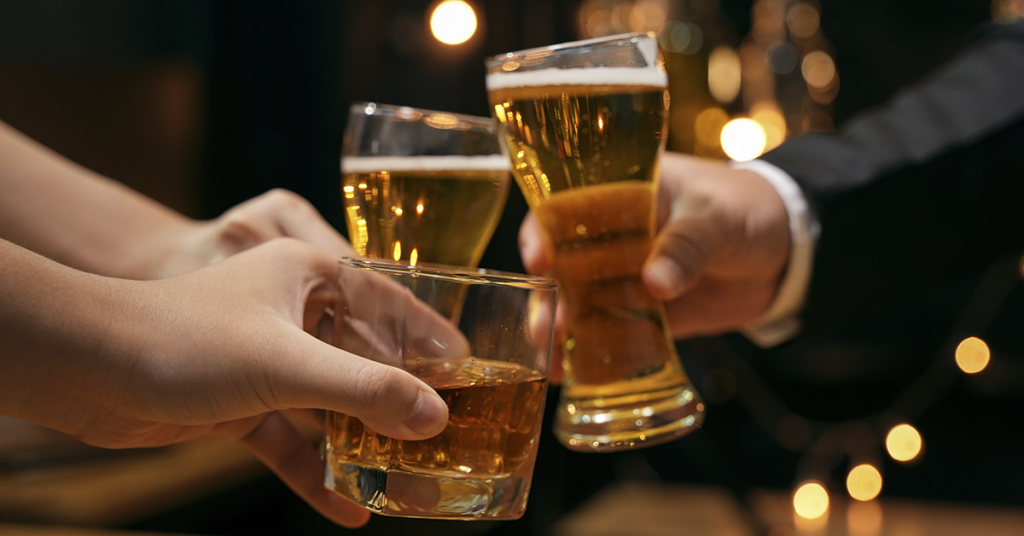When people talk about liver damage, alcohol usually gets all the blame. But here’s the shocking truth—some of the most damaging foods and drinks for your liver might already be sitting in your fridge, and they don’t contain a single drop of alcohol.
Recent studies have shed light on the rise of nonalcoholic fatty liver disease (NAFLD) and its more severe cousin, nonalcoholic steatohepatitis (NASH). These conditions are now the most common causes of chronic liver disease worldwide—and they have nothing to do with alcohol.
Let’s dive into the five everyday offenders that can damage your liver just as much as heavy drinking.

Understanding the Liver’s Role: Why It Deserves More Respect
Your liver is basically the body’s detox center. It processes nutrients, stores essential vitamins, produces bile for digestion, and filters out toxins. But when it gets overloaded—especially with sugar and fat—it begins to store fat internally. Over time, this buildup can lead to inflammation, scarring, and ultimately, liver failure.
So while alcohol is still a major concern, it’s time to pay attention to the sugar bombs and ultra-processed drinks that sneak their way into your daily routine.
Video: 10 Common Foods That Are Killing Your Liver!
1. Fruit Juice: Not as Innocent as It Looks

Sure, fruit juice has a health halo, but don’t let that fool you. Even 100% juice is loaded with fructose, a type of sugar that goes straight to your liver. Unlike whole fruits, juice lacks fiber, which means it hits your bloodstream fast—flooding your liver with sugar it doesn’t need.
What happens next? Your liver converts that sugar into fat through a process called lipogenesis. Over time, this fat piles up, increasing the risk of NAFLD.
Smart swap: Eat whole fruits instead. You’ll get all the vitamins and fiber, without overwhelming your liver.
2. Sweetened Iced Teas: Sugar Disguised as Refreshment

Those bottled teas on grocery shelves may look refreshing, but they’re often just sugar bombs in disguise. Most are packed with high-fructose corn syrup or cane sugar, which overloads your liver and contributes to fat accumulation.
Even worse, these drinks can spike insulin levels and promote systemic inflammation—two key drivers of metabolic dysfunction and liver disease.
Better option: Brew your own tea at home. Add a splash of honey or a pinch of stevia if you need sweetness, but avoid drowning your drink in sugar.
3. Energy Drinks: Caffeine Overload Meets Liver Strain

Energy drinks aren’t just wired with caffeine—they’re loaded with sugar, synthetic stimulants, and sometimes even herbs that interact poorly with liver function.
Studies show that frequent energy drink consumption can raise liver enzymes, a clear marker of liver stress. That’s why organizations like the American Academy of Pediatrics recommend that kids and teens stay far away from them.
Even for adults, the risks are real. Chronic intake can mess with your metabolism, raise blood pressure, and contribute to fatty liver disease.
Need a pick-me-up? Try black coffee or matcha for a cleaner energy boost—your liver will thank you.
4. Sports Drinks: Not Just for Athletes

Marketed as hydrating and healthy, sports drinks seem harmless—especially after a workout. But unless you’re an endurance athlete burning serious calories, those brightly colored bottles are mostly unnecessary.
Packed with sugar and synthetic vitamins, these drinks can actually overwhelm your liver. The liver can only store and metabolize a limited amount of vitamins and sugars at once. When there’s too much, it starts converting the excess into fat.
Over time, this added fat can settle in your liver, increasing your risk for NAFLD and metabolic issues.
Quick tip: Stick to water or coconut water for hydration. Reserve sports drinks for marathon days—not movie marathons.
5. Soda—Yes, Even the Diet Kind

This one’s a no-brainer, but it’s still worth emphasizing. Regular soda is one of the worst culprits for liver damage. It delivers a huge dose of refined sugar—mostly in the form of high-fructose corn syrup—which fast-tracks fat production in the liver.
But don’t think diet soda gets a free pass. While it skips the sugar, studies now show that artificial sweeteners can mess with your metabolism and even promote insulin resistance—another trigger for liver fat buildup.
Whether it’s loaded with sugar or sweetened artificially, soda is one of the most liver-damaging drinks you can consume regularly.
Best advice? Kick the habit entirely. If you need fizz, try sparkling water with lemon or a splash of real fruit juice.
The Silent Epidemic: NAFLD and the Modern Diet
Video: How Much Alcohol Would You Have to Drink Before Liver Damage
Nonalcoholic fatty liver disease now affects up to 30% of the global population—a number rising in step with rates of obesity, type 2 diabetes, and poor diet. The scary part? Most people with NAFLD don’t even know they have it.
There are no early symptoms. No pain. No warning. Just silent, progressive damage that can eventually lead to liver scarring (fibrosis), cirrhosis, and even liver cancer.
Protecting your liver starts with awareness, and that means reevaluating what we eat and drink—not just how often we drink alcohol.
What You Can Do Starting Today

Want to show your liver some love? Here’s where to begin:
- Read nutrition labels: Don’t assume a drink is healthy because it says “natural” or “light.”
- Cut back on processed sugars: Especially those hidden in drinks like juices, teas, and energy boosters.
- Prioritize hydration: Water is the best friend your liver has.
- Focus on whole foods: More fiber, fewer added sugars, and less “liquid sugar” in general.
Conclusion: Your Liver Deserves Better Than You Think
Your liver is constantly working behind the scenes to keep you healthy, energized, and balanced. But it’s easy to overwhelm it—not just with alcohol, but with the everyday drinks we barely think twice about.
From sugary teas to “healthy” fruit juices, the culprits are hiding in plain sight. By cutting back on these five offenders and making smarter swaps, you give your liver the breathing room it needs to thrive.
Because when your liver works better—you do, too.


